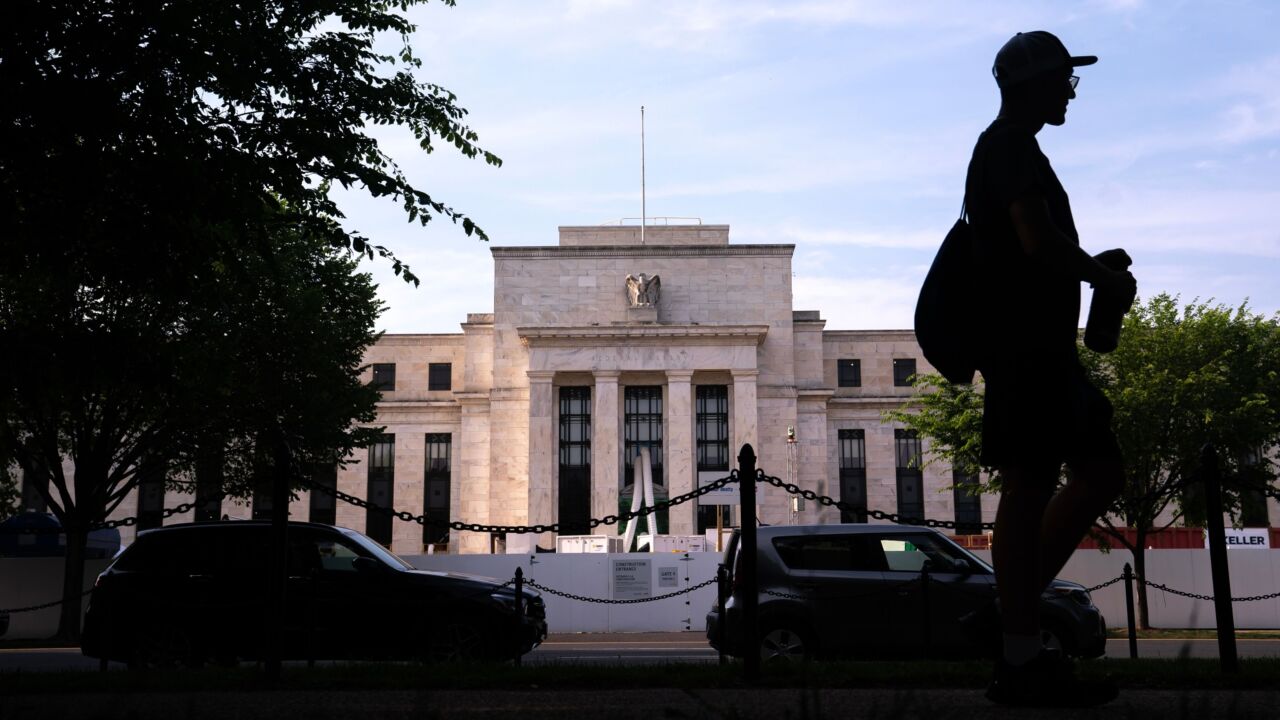Federal Reserve
Federal Reserve
-
During a contentious exchange on his second day of congressional testimony this week, the Federal Reserve chair drew a line between the central bank's response to last year's bank failures and its current capital proposal.
March 7 -
Jefferson voiced cautious optimism that inflation is headed lower despite a blip in January and said the Fed is likely to begin cutting interest rates later this year.
February 22 -
Federal Reserve Vice Chair for Supervision Michael Barr said Friday that Fed supervisors continue to draw on lessons learned from last March's bank failures—including heightened scrutiny—addressing risks banks currently face including firm asset growth, liquidity pressures and plummeting commercial real estate values.
February 16 -
The risk that inflation could remain stuck above their 2% target is guiding Fed officials' preference to keep interest rates where they are for now, even as investors have clamored for cuts.
February 14 -
She cited the increase in interest rates, higher vacancy rates thanks to shifting work patterns triggered by the pandemic and a wave of commercial real estate loans coming due this year.
February 6 -
Yields across the maturity spectrum climbed as much as 10 basis points on the day, reaching session highs after the ISM gauge of service-sector activity for January exceeded economist estimates.
February 5 -
A key Senator had urged Fed Chairman Jerome Powell to lower rates early this year, but although there's more consensus on making such a move, it now looks unlikely to happen until after the next meeting.
January 31 -
Yields moved in tandem — rising sharply in the immediate aftermath of the employment data before going on to swoon as investors used the rise in yields to snap up Treasuries.
January 5 -
Alberto Musalem, a finance professor with experience in both the public and private sectors, will take over the reins at the regional reserve bank in April.
January 4 -
That said, officials "reaffirmed that it would be appropriate for policy to remain at a restrictive stance for some time until inflation was clearly moving down sustainably."
January 3 -
Bostic said he expects the US central bank will cut rates twice in 2024 — in the second half of the year — as inflation continues to slowly decline.
December 19 -
The Federal Reserve has allowed more than $1 trillion of assets to roll off its balance sheet. Chair Jerome Powell says he doesn't believe reserves in the banking system are nearing a level that would cause the Fed to slow down or stop.
December 13 -
Benchmark two-year yields, those most closely tied to the outlook for US central-bank policy, rose as much as 14 basis points, the most in a day since June.
December 8 -
Investors are pricing in more than a 50% chance the Fed will lower borrowing costs in March, and expect the central bank's benchmark rate will fall to around 4% by the end of 2024.
December 6 -
Yields dropped across the US curve after data showed job openings fell to the lowest level since March 2021. Concerns about investors being too fast in anticipating policy easing have resurfaced.
December 5 -
While the Fed chief said officials are ready to hike further if needed, he also noted policy is "well into restrictive territory." Two-year yields sank 13 basis points to 4.55%.
December 1 -
The financial services industry has run TV ads during football games and organized lobbying visits by small-business owners in its fight against the Basel III endgame plan to raise capital requirements for larger lenders. The tactics are beginning to show signs of working.
November 20 -
In her first remarks since the release of a sweeping report on the banks, Federal Housing Finance Agency Director Sandra Thompson urges them to strengthen underwriting and communication with their members' regulators.
November 20 -
The annual inflation rate has dropped to 3.2% in October from its 2022 peak of more than 9% after the Federal Reserve embarked on an aggressive campaign to cool price pressures.
November 20 -
Long-dated Treasury yields had reached the lowest levels in more than a month just a day earlier, attributed to investors and traders positioning for the end of the Fed's historically aggressive tightening cycle.
November 10


















